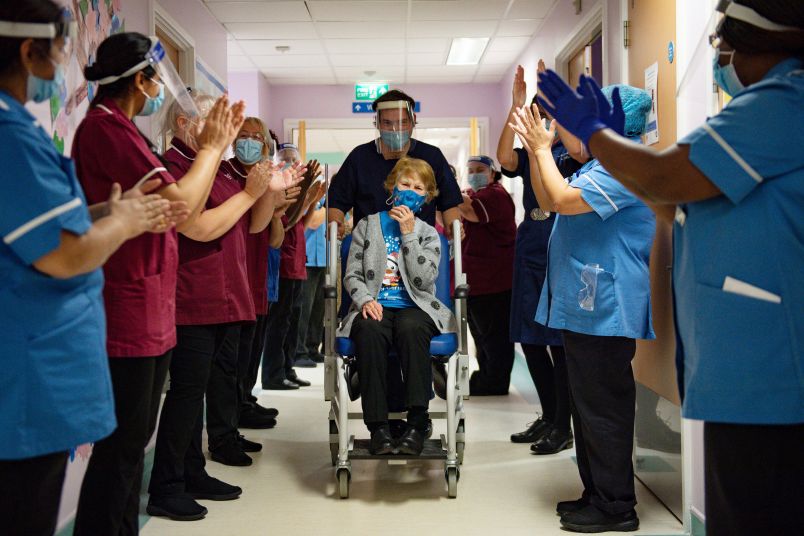There’s no one answer to when the COVID-19 vaccine will be available. Instead, there are fifty.
It’s a side-effect of the Trump administration’s failure to build a national plan for distributing the vaccine, instead leaving it up to the fifty states to develop fifty different approaches towards inoculating the population.
Right now, most states are focusing on vaccinating the two categories of people that a federal panel said should be first in line to receive the shot: long-term care facility residents and health-care workers.
How long it takes to finish vaccinating that first category — which, per an estimate by Kaiser Family Foundations, contains around 17 million people — indicates how badly the effort is lagging.
Kentucky Gov. Andy Beshear (D) said on Monday that his state would likely finish that phase in early February.
In Oregon, Dr. Paul Cieslak of the Oregon Health Authority said that the state wouldn’t move past phase 1A until February or March.
The plodding, slow place of vaccinations pushes the shot’s availability to the general public deep into 2021, even as Trump administration officials in charge of the effort, like HHS Secretary Alex Azar, have said that the vaccine would be as available as the flu shot by March.
And even though officials with Operation Warp Speed, the Trump administration’s vaccine program, have contradicted that dubious estimate with their own assessment of summer availability, problems with the rollout could extend the pandemic deep into fall 2021.
It comes after Congress failed to allocate money for the distribution effort until last month; that money has yet to make it to state and local health departments responsible for vaccinating the country. And it also comes as the Trump administration continues to pin the blame for the foundering rollout on the states themselves, saying that the same health departments that have been fighting the virus and asking for funding to plan for vaccinations should have been ready to receive and administer doses.
New York City politicos are racing to find ways to vaccinate more people faster, while at least one aide to Gov. Andrew Cuomo (D) suggested limited supply was the main constraint to the state emerging from phase 1A.
Rich Azzopardi, a Cuomo spokesman, said on Tuesday that the city needs doses for 800,000 New Yorkers until it can move beyond the initial phase.
Follow the #s
917k —The NYC universe of vaccination minus long term care staffers & residents.
304,815 — Vaccines delivered to NYC for this universe in weeks 1 – 3
119k — Shots administered
185,815 — vaccinations left
798k — eligible New Yorkers.
Don’t be distracted https://t.co/IRtdTWESyN
— Rich Azzopardi (@RichAzzopardi) January 5, 2021
City data shows that 9,023 people in the Five Boroughs received vaccine doses on Monday.
Some cities and states are moving relatively quickly through the early phase of vaccinations, though that doesn’t mean there won’t be problems scaling up to large-scale, mass vaccinations later on.
In D.C., one of the faster vaccinating areas in the country, district officials plan to begin vaccinating those 65 and older the week of Jan. 11.
Meanwhile, North Carolina officials say that the state will move on to phase 1B next week — meaning that those 75 and older will be able to receive the shot.






